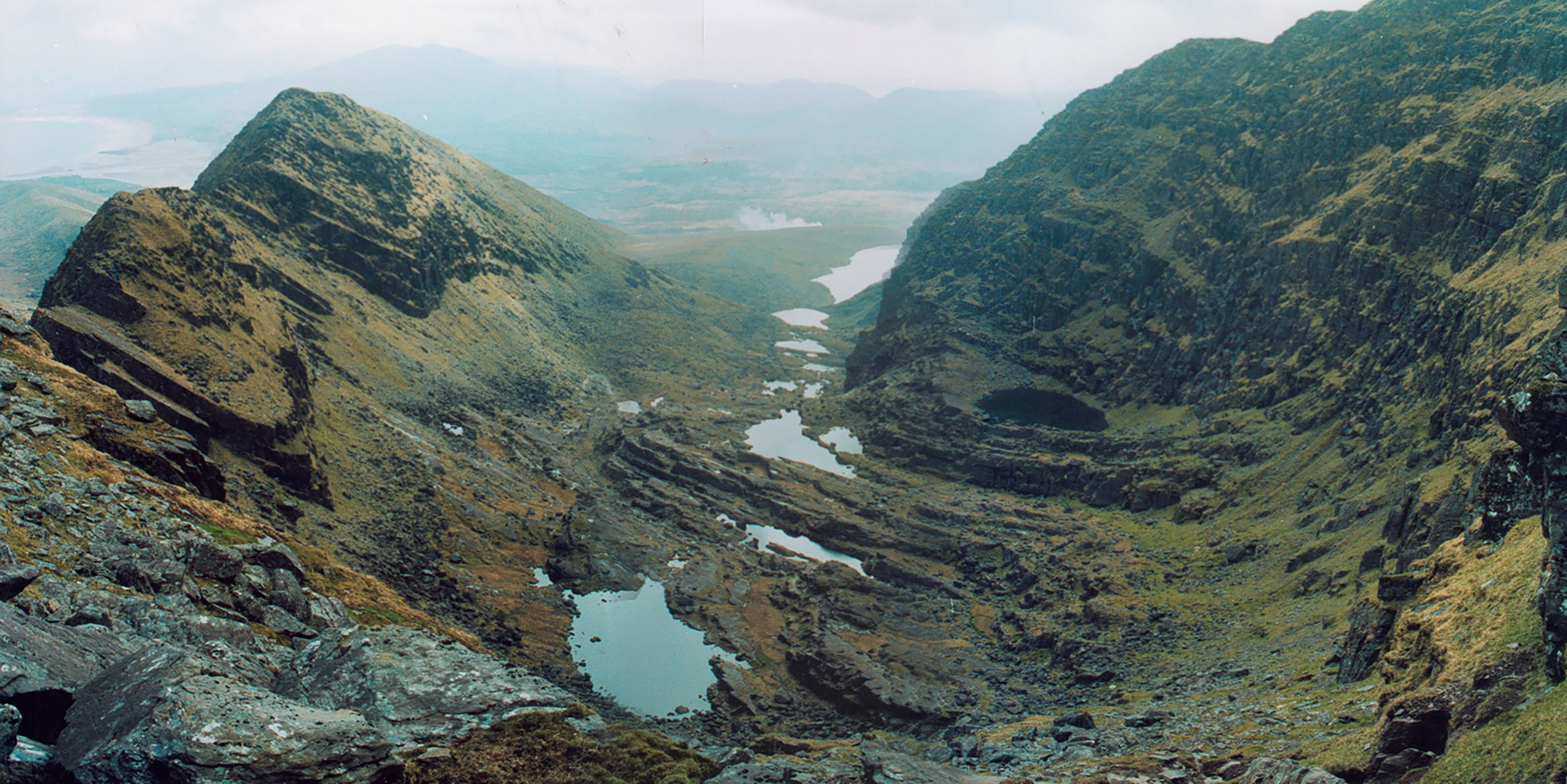Originally published 22 August 2004
My newest book, Climbing Brandon: Science and Faith on Ireland’s Holy Mountain, was launched here in Ireland the other evening, by (appropriately) Brandon Books, which — like me — makes its home near the base of the mountain.
An Irish book launch is a festive affair, this one held in O’Flaherty’s Bar in Dingle town. Pints were quaffed. A bit of nosh devoured. A few short speeches and a quick read by the author. I was rather expecting a bottle of champagne to be busted over my head like they do when they launch a boat down at Dingle pier, but I was spared that indignity.
Anyway, a handsome Ireland/UK edition of the book is now adrift on the iffy seas of the public’s affection. We await the reviews.
Brandon is Ireland’s second highest peak, after Carrantuohill across Dingle Bay. It takes its name (according to local tradition) from Saint Brendan, who set sail from a cove near the mountain’s base on his legendary voyage to America.
The most popular route to the summit is by the old pilgrim path from the shrine at Faha shared by the Virgin and the Saint, at the eastern foot of the mountain. The ascent takes the climber through a steep-sided valley called Coumaknock (“mountain hollow”).
In the mid-nineteenth century, John Ball, an Alpine mountaineer, visited this and other nearby bowl-shaped valleys (called corries or cirques by geologists) and noticed similarities to valleys in Switzerland where living glaciers reside today. Where you see the same effect, assume the same cause, said Ball, and so the reality of the Ice Ages in Europe was recognized.
Nowhere on Brandon is the skeletal structure of the mountain so vividly displayed as in these bare, damp corrie rocks. The ice-carved gash of Coumaknock is like a surgeon’s incision that lays bare the mountain’s sedimentary strata. Looping, twisted layers of rock confirm dramatically, if confirmation were needed, the stories told by geologists of ancient seas and shifting continents.
Most of the rocks date from the Upper Paleozoic Era of Earth history, between 300 and 400 million years ago, the era of “early life,” when the first amphibious creatures were moving out of the seas onto the land, insects took wing, and parts of the continents were covered with vast swampy forests.
Continents were adrift then as always, riding the moving sheets of Earth’s crust called plates. An ocean called Iapetus was squeezed out of existence as older, less familiar continents collided to form a new landmass called the Old Red Sandstone continent. The origin of the name is clear; the rocks under our feet are red, rose, pink, salmon, maroon.
The Dingle Peninsula was then a lowland basin in the interior of the Old Red Sandstone continent. There are no marine fossils in the rocks, only fossilized burrows of terrestrial worms, so we know the basin in which these sandstones were deposited was dry. Crossbedding suggests windblown sedimentation.
Towards the end of the Paleozoic, about 250 million years ago, a second mountain building thrust, associated with the approaching collision of Africa and Europe in the south, crumpled the sandstone layers and forced them skyward.
I trace on my geologic map the track of our ascent, from Faha to the summit. The map shows one color for the length of the path, which the accompanying booklet identifies as Ballymore Sandstone Formation, “rhythmically bedded and firmly consolidated sediments,” layer after layer of red rock, altogether about a kilometer thick.
In the ice-carved headwall of Coumaknock the folds of these strata are beautifully revealed. As we make the steep ascent up through the strata, we are making a journey through millions of years of time, an epoch hundreds of millions of years ago when these rocks were deposited layer by layer, grain by grain.
The 1500 years that separate us from Saint Brendan are as nothing compared to the abyss of time by which we are distant from the burrowing worms of the Old Red Sandstone Continent, and the reality of those eons is manifestly clear to anyone who makes the ascent of Brandon along the pilgrim path from Faha.
John Carey, a scholar of early Irish Christianity, tells us that the Irish of Brendan’s era grounded their faith firmly in the natural world. “In finding a road to God in their experience of nature, the Irish celebrated a universe which is not sundered from its Maker,” writes Carey.
“If you wish to know the Creator, first study the natural world” said Brendan’s contemporary Saint Columbanus, and nothing speaks quite so eloquently of the creative power of the Mystery of Mysteries as the ice scoured rock walls of Coumaknock.



